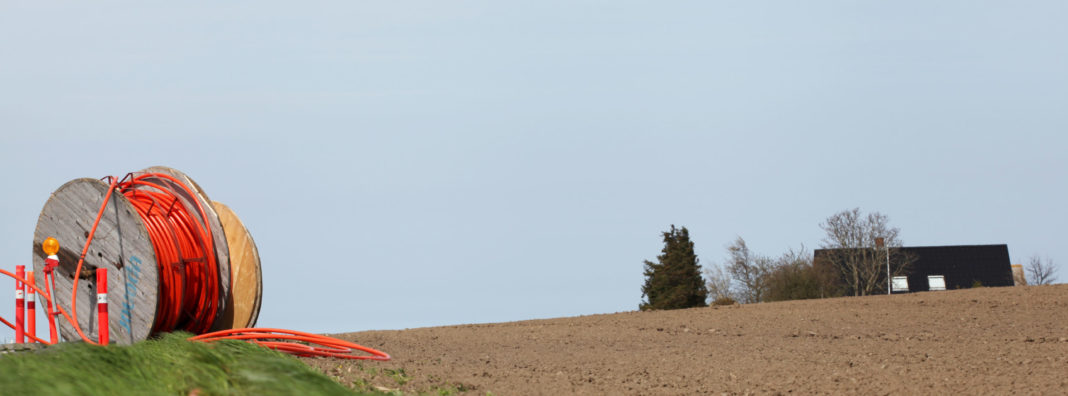
Late last year, Congress set aside $3.14 billion to help low-income households pay for broadband service and connected Internet devices. In May, the FCC went live with the Emergency Broadband Benefit (EBB) Program, which now includes over 6.4 million enrolled households. But the program is temporary and slated to end either when funds are exhausted or six months after the end of the COVID-19 health emergency.
Since Congress is likely to extend the program through the infrastructure bill, policymakers need to understand the full extent of the program’s impact. To this end, we are releasing a county-level dataset for researchers and leaders alike that will help everyone better understand the EBB program. As many had hoped, our analysis of these enrollments suggests they are going towards low income communities.
Paradoxically, however, the program isn’t going towards communities where there is little uptake of broadband. Early data analysis shows that areas with low broadband uptake are less likely to enroll in the program. If leaders want to connect the unconnected, in addition to low-income groups, other programs will be needed. EBB isn’t targeting these low-adoption communities.
The basics of the EBB
The Emergency Broadband Benefit program provides households up to $50 per month for broadband service. Those living on tribal lands could receive enhanced support of up to $75 per month toward broadband services. The program also provides a one-time device discount of up to $100 for a laptop, desktop computer, or tablet purchased through a participating provider.
The EBB was funded through the Consolidated Appropriations Act, which was signed on December 27, 2020. Two months later, on February 26, the FCC released a report and order, which established the EBB, laid out the rules of the program, and then delegated the authority to the Universal Service Administrative Company (USAC), which the FCC created to administer the programs. In May, the new program went live and since then, USAC has released data on the number of households in a claims tracker.
Eligibility comes through one of four ways. First and most important, a household might already meet the qualifications for participation in the Lifeline program. The Lifeline program began in 1984 under the Reagan administration to support telecommunication services for low-income households. Through the years, the FCC issued a set of orders extending the scope of the Lifeline program from its origins in plain old telephone service to mobile phones and then mobile Internet. Wisely, the FCC has extended the National Verification system to accept new households. The vast majority of EBB enrollments have come through this method, at just under 79 percent.
Otherwise, a household can get the support if they have been approved for free or reduced school lunch or breakfast, experienced a substantial loss of income due to the pandemic, or received a Federal Pell Grant.
The expansion of the EBB
As of October 10, 2021, around 6.4 million households have enrolled to be a part of the EBB. The first few weeks of the program saw the largest growth period, but that has since decreased. In the first full week of the program, nearly 1 million households signed up, and in the second week half a million followed. Since those first weeks in May, the rate of new signups each week has dropped to about 200,000 new non-tribal homes and about 2,000 tribal homes. The graph below charts the number of new enrollments each week, combining both tribal and non-tribal households.
Getting support to 6.4 million households has cost $600 million so far, $546 million of which went to service support and $53.9 million went to devices. But not every household is taking the full amount of support. The current utilization rate is about 75 percent of the maximum allowed. Most people aren’t taking the full $50 support.
Assuming that this growth rate continues, the number of households enrolled might grow to 10 million in January. If the infrastructure bill is not signed, the program might run out as early as April 2022. Less aggressive estimates of growth only push out the termination date just a month longer to May. Finally, assuming that no more people are added to the program, the $3 billion mark will be reached in July. This last assumption provides a baseline for comparison. Congress, however, seems poised to pass the infrastructure bill, which would extend the program with another $14 billion.
The reach of the EBB
To make the data more approachable, October's release has been converted from ZIP code data provided by USAC to county-level data using HUD crosswalks. It is available in the graph below.
Early analysis of the EBB data from Scott Wallsten at the Technology Policy Institute “suggests that areas with higher shares of low-income households with broadband are signing up at lower rates than elsewhere.” In the Appendix attached to this post, the results of a new study that I conducted are detailed. It aims to chart the relationship among EBB enrollments, the percent of low income homes in a region, and the number of homes without Internet access. In contrast to Wallsten, it found that enrollments maintain a positive relationship with poverty, which makes sense. More poverty in a region should mean that the area is receiving more assistance through EBB.
But it also found that enrollments were negatively connected to the number of households without broadband in a region. Although there are many possible reasons for this finding, it should give leaders pause that areas with more people offline have fewer EBB enrollments. The relationship should be positive. While none of this is the final word on the EBB program, it is clear that the FCC needs to conduct further analysis.
While they are at it, the FCC should also properly study the effectiveness of the Lifeline program, which the GAO has recommended since 2015. As I noted previously, “The lesson from policymakers is clear. Cost might be a barrier for some, but lowering cost doesn’t get a lot of people newly connected.” The EBB has been a lifesaver for many, but getting the unconnected onto the Internet will require something more.
Appendix
USAC’s Emergency Broadband Benefit Program Enrollments and Claims Tracker offers a unique dataset to understand the relationship among EBB enrollments, the percent of low-income homes in a region, and the number of homes without Internet access. The raw data is keyed via ZIP code, instead of the more common county-level format of the Census. To tease out these relationships, ZIP data was converted to county level using the HUD-USPS ZIP Code Crosswalk table. The unit of analysis for this project is county and data was collected during the week of October 18, 2021.
The model assumes that enrollments are a function of both the poverty rate and not being connected to the Internet, as well as an interaction between the two. We know that Internet service is influenced by density, age, education level, race, and income. To control for these demographic variations, the model includes the county’s Rural-Urban Continuum Code (RUCC), the median age of a household, the percentage of households with a bachelor’s degree, the percentage of households that are white, and the median income for a household in dollars. All of these variables have been collected from the American Community Survey 5 Year Estimates for 2019. The dependent variable has been scaled to the number of enrollments per 1000 households for easier interpretation.
The functional form is thus:
yi = β0 + β1*[no internet] + β2*[poverty] + β3*[no internet*poverty] + β4*[Controls] + ε
Four models were run, using both quantile regressions and traditional OLS. Quantile regressions are still linear in form like OLS, but they calculate the conditional median of the estimator, not the conditional mean. Models 1 & 5 are the full regressions including both no Internet and poverty as well as their interaction. Models 2 & 6 include both variables, but exclude the interaction. Models 3 & 7 only include the no Internet variable while Models 4 & 8 only include poverty.
The results of the quantile regression are as follows:
The results of the OLS tests are as follows:
First off, we should be hesitant to interpret the magnitude and direction of the controls. Controls are meant to establish conditional moments among the variables of interest, which include enrollments, no Internet, and poverty. Critically, these models are meant to chart some basic trends among the variables of interest, not the controls themselves.
While the above regression only allows for correlations to be established, the directions are telling. As is clearly evident throughout all of the models, poverty’s coefficient isn’t particularly sensitive to the inclusion of the no Internet variable, the interaction, or the type of model used. It suggests that this variable is well calibrated. In other words, more poverty means more enrollments.
In contrast, regions with fewer households online are negatively correlated with enrollments, a surprising result. One would expect that regions with fewer broadband subscribers would be more likely to enroll in the program, but the opposite seems to be true. The interaction is also somewhat surprising because it suggests that areas with both poverty and low Internet subscribership are more likely to enroll in the EBB. However, given the uncertainty of this relationship, it needs further analysis.

